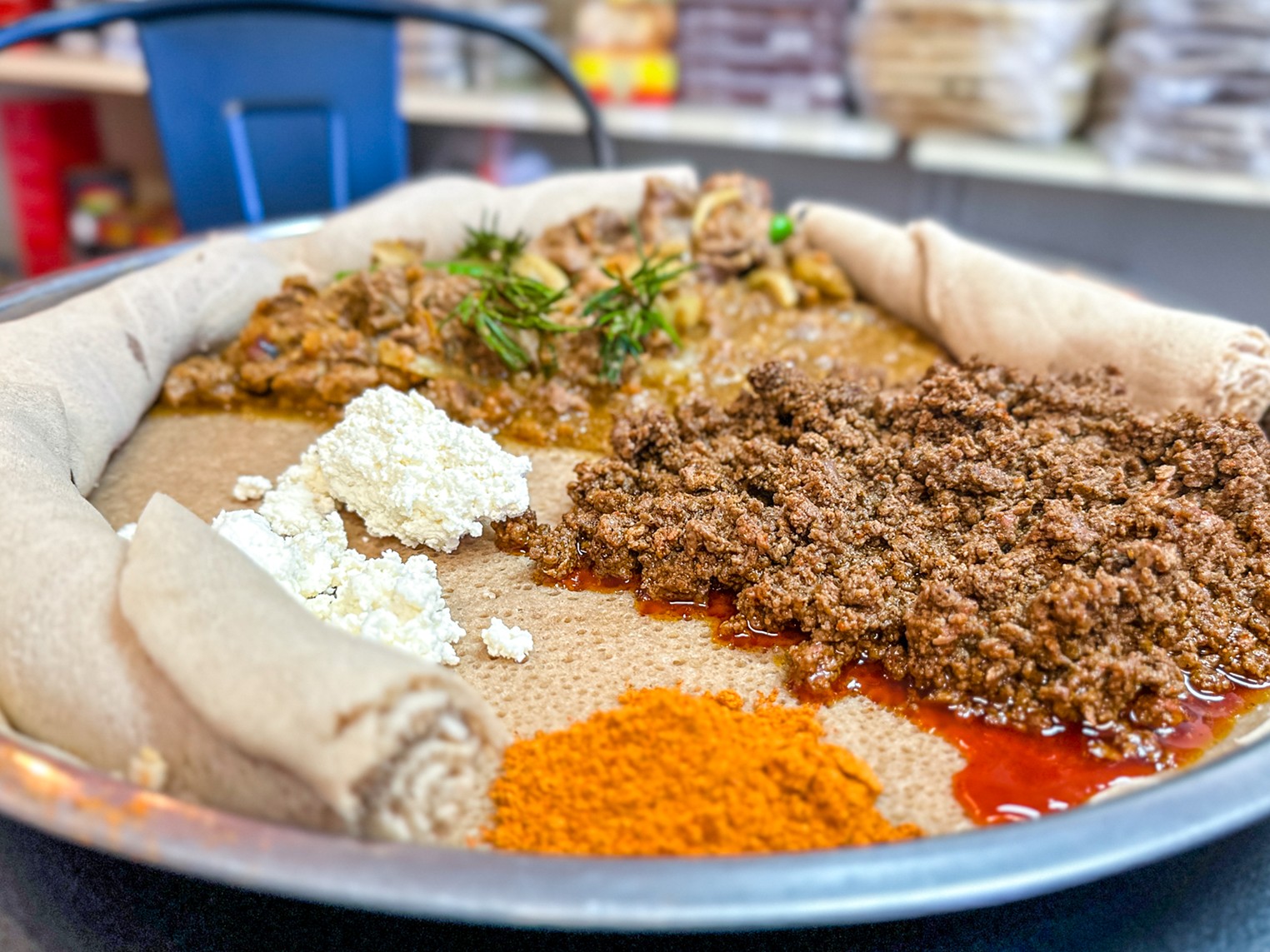Agoza Kitchen: A Hidden Ethiopian Restaurant and Mini Mart in North Dallas


Agoza Kitchen, a hidden Ethiopian restaurant in North Dallas near the old Valley View Mall, is yet another hidden gem of Dallas. Or is it called Koba Kitchen?
Hank Vaughn
Goods for sale include many flat breads and injera, the pancake-like bread with a spongy texture traditionally made with teff flour, from an annual seed-producing grass native to Ethiopia. Injera is usually both the serving platter and the utensil used for the meal. The store also has bags of Ethiopian coffee beans in various roast levels, as well as some beverages.
The prepared food menu includes kitfo, firfir, tibse, soups, salads and sambusa, Ethiopia’s version of the dumpling. We decided on lamb tibse, beef kitfo and a single sambusa. A helpful gentleman gestured to one of the three small tables and brought us an extra chair just for my wife’s purse. Now that’s service, even though we’re still not sure if he was a customer or an employee.
While we waited, several people came and left, some purchasing bread, some taking home some butchered meat, some picking up to-go orders. Clearly, despite any issues with what the name of this place is, people have found it.

Sambusa, an Ethiopian samosa-like dumpling stuffed with lentils and spices, is a satisfying little bite.
Hank Vaughn
The sambusa was really good and a steal at just $1.50; we probably could have eaten half a dozen. A little triangular fried thing reminiscent of a samosa, it’s filled with a lentil mixture that was full of flavor and almost meat-like.
The kitfo and tibse arrived together on one large serving platter lined with a large thin injera along with four or five additional pieces of injera rolled up, from which we tore pieces and used to scoop up and eat the food: there were no other utensils available, but there is a handy sink that you can use to wash your hands pre- and post-meal.

Lamb tibse (top left) and beef kitfo (bottom right) with house-made cheese and a lot of injera used in lieu of traditional cutlery.
Hank Vaughn
The lamb tibse consisted of sautéed and chopped pieces of lamb grilled with tomatoes, onion, jalapeños and a garlic and ginger paste, seasoned with rosemary, black pepper and spices. The whole sprigs of rosemary provided a fragrant presentation.
The kitfo was minced beef cooked to a medium rare with purified Ethiopian butter and Ethiopian mitmita (hot pepper) and accompanied with house-made cheese that was very similar in taste and texture to ricotta. This was spicier than the tibse, but the cheese worked wonders to cut the heat a bit.
When we were almost done the helpful gentleman brought us two new rolls of injera but we had to beg off; we had enough trouble trying to finish what we had. It was a lot of food. He also brought us more napkins unprompted. He was very attentive. If he’s just a customer, Agoza should hire him.
After we finished we made use of the sink again, because if we’re being honest our injera skills leave a lot to be desired. Occasionally ,you have to get your hands dirty for the greater good.
[ad_2]
Share this news on your Fb,Twitter and Whatsapp
Times News Network:Latest News Headlines
Times News Network||Health||New York||USA News||Technology||World News
